
October 28, 2024
Life Story of Famous People
Short Bio » Civil Rights Leader » Mahatma Gandhi


Mahatma Gandhi
Mohandas Karamchand Gandhi was the preeminent leader of the Indian independence movement in British-ruled India. Mohandas Karamchand Gandhi was born on 2 October 1869 to a Hindu Modh Baniya family in Porbandar (also known as Sudamapuri ), a coastal town on the Kathiawar Peninsula and then part of the small princely state of Porbandar in the Kathiawar Agency of the Indian Empire. Employing nonviolent civil disobedience, Gandhi led India to independence and inspired movements for civil rights and freedom across the world.
Gandhi famously led Indians in challenging the British-imposed salt tax with the 400 km (250 mi) Dandi Salt March in 1930, and later in calling for the British to Quit India in 1942. He was imprisoned for many years, upon many occasions, in both South Africa and India. One of Gandhi’s major strategies, first in South Africa and then in India, was uniting Muslims and Hindus to work together in opposition to British imperialism. In 1919–22 he won strong Muslim support for his leadership in the Khilafat Movement to support the historic Ottoman Caliphate. By 1924, that Muslim support had largely evaporated.
Time magazine named Gandhi the Man of the Year in 1930. Gandhi was also the runner-up to Albert Einstein as “Person of the Century” at the end of 1999. The Government of India awarded the annual Gandhi Peace Prize to distinguished social workers, world leaders and citizens. Nelson Mandela, the leader of South Africa’s struggle to eradicate racial discrimination and segregation, was a prominent non-Indian recipient. In 2011, Time magazine named Gandhi as one of the top 25 political icons of all time. Gandhi did not receive the Nobel Peace Prize, although he was nominated five times between 1937 and 1948, including the first-ever nomination by the American Friends Service Committee, though he made the short list only twice, in 1937 and 1947.
Indians widely describe Gandhi as the father of the nation. In 2007, the United Nations General Assembly declared Gandhi’s birthday 2 October as “the International Day of Nonviolence.
More Info: Wiki
Fans Also Viewed

Published in Historical Figure

More Celebrities
Mahatma Gandhi
Mahatma Gandhi was the primary leader of India’s independence movement and also the architect of a form of non-violent civil disobedience that would influence the world. He was assassinated by Hindu extremist Nathuram Godse.
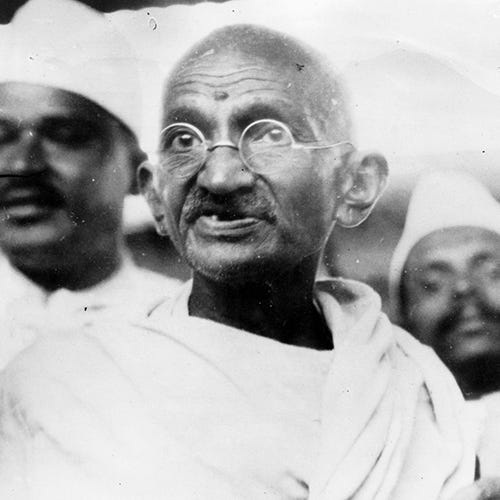
(1869-1948)
Who Was Mahatma Gandhi?
Mahatma Gandhi was the leader of India’s non-violent independence movement against British rule and in South Africa who advocated for the civil rights of Indians. Born in Porbandar, India, Gandhi studied law and organized boycotts against British institutions in peaceful forms of civil disobedience. He was killed by a fanatic in 1948.
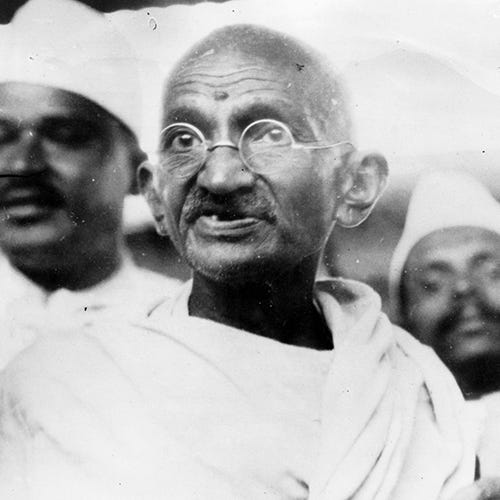
Early Life and Education
Indian nationalist leader Gandhi (born Mohandas Karamchand Gandhi) was born on October 2, 1869, in Porbandar, Kathiawar, India, which was then part of the British Empire.
Gandhi’s father, Karamchand Gandhi, served as a chief minister in Porbandar and other states in western India. His mother, Putlibai, was a deeply religious woman who fasted regularly.
Young Gandhi was a shy, unremarkable student who was so timid that he slept with the lights on even as a teenager. In the ensuing years, the teenager rebelled by smoking, eating meat and stealing change from household servants.
Although Gandhi was interested in becoming a doctor, his father hoped he would also become a government minister and steered him to enter the legal profession. In 1888, 18-year-old Gandhi sailed for London, England, to study law. The young Indian struggled with the transition to Western culture.
Upon returning to India in 1891, Gandhi learned that his mother had died just weeks earlier. He struggled to gain his footing as a lawyer. In his first courtroom case, a nervous Gandhi blanked when the time came to cross-examine a witness. He immediately fled the courtroom after reimbursing his client for his legal fees.
Gandhi’s Religion and Beliefs
Gandhi grew up worshiping the Hindu god Vishnu and following Jainism, a morally rigorous ancient Indian religion that espoused non-violence, fasting, meditation and vegetarianism.
During Gandhi’s first stay in London, from 1888 to 1891, he became more committed to a meatless diet, joining the executive committee of the London Vegetarian Society, and started to read a variety of sacred texts to learn more about world religions.
Living in South Africa, Gandhi continued to study world religions. “The religious spirit within me became a living force,” he wrote of his time there. He immersed himself in sacred Hindu spiritual texts and adopted a life of simplicity, austerity, fasting and celibacy that was free of material goods.
Gandhi in South Africa
After struggling to find work as a lawyer in India, Gandhi obtained a one-year contract to perform legal services in South Africa. In April 1893, he sailed for Durban in the South African state of Natal.
When Gandhi arrived in South Africa, he was quickly appalled by the discrimination and racial segregation faced by Indian immigrants at the hands of white British and Boer authorities. Upon his first appearance in a Durban courtroom, Gandhi was asked to remove his turban. He refused and left the court instead. The Natal Advertiser mocked him in print as “an unwelcome visitor.”
Nonviolent Civil Disobedience
A seminal moment occurred on June 7, 1893, during a train trip to Pretoria, South Africa, when a white man objected to Gandhi’s presence in the first-class railway compartment, although he had a ticket. Refusing to move to the back of the train, Gandhi was forcibly removed and thrown off the train at a station in Pietermaritzburg.
Gandhi’s act of civil disobedience awoke in him a determination to devote himself to fighting the “deep disease of color prejudice.” He vowed that night to “try, if possible, to root out the disease and suffer hardships in the process.”
From that night forward, the small, unassuming man would grow into a giant force for civil rights. Gandhi formed the Natal Indian Congress in 1894 to fight discrimination.
Gandhi prepared to return to India at the end of his year-long contract until he learned, at his farewell party, of a bill before the Natal Legislative Assembly that would deprive Indians of the right to vote. Fellow immigrants convinced Gandhi to stay and lead the fight against the legislation. Although Gandhi could not prevent the law’s passage, he drew international attention to the injustice.
After a brief trip to India in late 1896 and early 1897, Gandhi returned to South Africa with his wife and children. Gandhi ran a thriving legal practice, and at the outbreak of the Boer War, he raised an all-Indian ambulance corps of 1,100 volunteers to support the British cause, arguing that if Indians expected to have full rights of citizenship in the British Empire, they also needed to shoulder their responsibilities.
In 1906, Gandhi organized his first mass civil-disobedience campaign, which he called “Satyagraha” (“truth and firmness”), in reaction to the South African Transvaal government’s new restrictions on the rights of Indians, including the refusal to recognize Hindu marriages.
After years of protests, the government imprisoned hundreds of Indians in 1913, including Gandhi. Under pressure, the South African government accepted a compromise negotiated by Gandhi and General Jan Christian Smuts that included recognition of Hindu marriages and the abolition of a poll tax for Indians.
Return to India
When Gandhi sailed from South Africa in 1914 to return home, Smuts wrote, “The saint has left our shores, I sincerely hope forever.” At the outbreak of World War I , Gandhi spent several months in London.
In 1915 Gandhi founded an ashram in Ahmedabad, India, that was open to all castes. Wearing a simple loincloth and shawl, Gandhi lived an austere life devoted to prayer, fasting and meditation. He became known as “Mahatma,” which means “great soul.”
Opposition to British Rule in India
In 1919, with India still under the firm control of the British, Gandhi had a political reawakening when the newly enacted Rowlatt Act authorized British authorities to imprison people suspected of sedition without trial. In response, Gandhi called for a Satyagraha campaign of peaceful protests and strikes.
Violence broke out instead, which culminated on April 13, 1919, in the Massacre of Amritsar. Troops led by British Brigadier General Reginald Dyer fired machine guns into a crowd of unarmed demonstrators and killed nearly 400 people.
No longer able to pledge allegiance to the British government, Gandhi returned the medals he earned for his military service in South Africa and opposed Britain’s mandatory military draft of Indians to serve in World War I.
Gandhi became a leading figure in the Indian home-rule movement. Calling for mass boycotts, he urged government officials to stop working for the Crown, students to stop attending government schools, soldiers to leave their posts and citizens to stop paying taxes and purchasing British goods.
Rather than buy British-manufactured clothes, he began to use a portable spinning wheel to produce his own cloth. The spinning wheel soon became a symbol of Indian independence and self-reliance.
Gandhi assumed the leadership of the Indian National Congress and advocated a policy of non-violence and non-cooperation to achieve home rule.
After British authorities arrested Gandhi in 1922, he pleaded guilty to three counts of sedition. Although sentenced to a six-year imprisonment, Gandhi was released in February 1924 after appendicitis surgery.
He discovered upon his release that relations between India’s Hindus and Muslims devolved during his time in jail. When violence between the two religious groups flared again, Gandhi began a three-week fast in the autumn of 1924 to urge unity. He remained away from active politics during much of the latter 1920s.
Gandhi and the Salt March
Gandhi returned to active politics in 1930 to protest Britain’s Salt Acts, which not only prohibited Indians from collecting or selling salt—a dietary staple—but imposed a heavy tax that hit the country’s poorest particularly hard. Gandhi planned a new Satyagraha campaign, The Salt March , that entailed a 390-kilometer/240-mile march to the Arabian Sea, where he would collect salt in symbolic defiance of the government monopoly.
“My ambition is no less than to convert the British people through non-violence and thus make them see the wrong they have done to India,” he wrote days before the march to the British viceroy, Lord Irwin.
Wearing a homespun white shawl and sandals and carrying a walking stick, Gandhi set out from his religious retreat in Sabarmati on March 12, 1930, with a few dozen followers. By the time he arrived 24 days later in the coastal town of Dandi, the ranks of the marchers swelled, and Gandhi broke the law by making salt from evaporated seawater.
The Salt March sparked similar protests, and mass civil disobedience swept across India. Approximately 60,000 Indians were jailed for breaking the Salt Acts, including Gandhi, who was imprisoned in May 1930.
Still, the protests against the Salt Acts elevated Gandhi into a transcendent figure around the world. He was named Time magazine’s “Man of the Year” for 1930.
Gandhi was released from prison in January 1931, and two months later he made an agreement with Lord Irwin to end the Salt Satyagraha in exchange for concessions that included the release of thousands of political prisoners. The agreement, however, largely kept the Salt Acts intact. But it did give those who lived on the coasts the right to harvest salt from the sea.
Hoping that the agreement would be a stepping-stone to home rule, Gandhi attended the London Round Table Conference on Indian constitutional reform in August 1931 as the sole representative of the Indian National Congress. The conference, however, proved fruitless.
DOWNLOAD BIOGRAPHY'S MAHATMA GANDHI FACT CARD
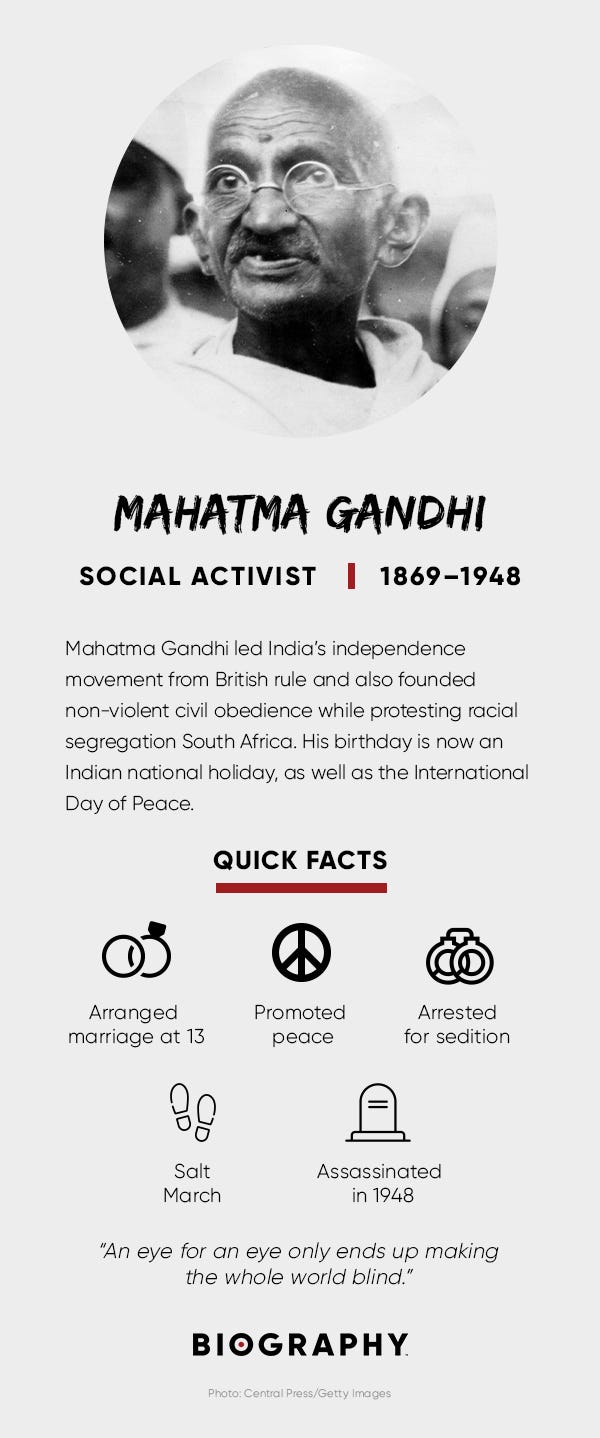
Protesting "Untouchables" Segregation
Gandhi returned to India to find himself imprisoned once again in January 1932 during a crackdown by India’s new viceroy, Lord Willingdon. He embarked on a six-day fast to protest the British decision to segregate the “untouchables,” those on the lowest rung of India’s caste system, by allotting them separate electorates. The public outcry forced the British to amend the proposal.
After his eventual release, Gandhi left the Indian National Congress in 1934, and leadership passed to his protégé Jawaharlal Nehru . He again stepped away from politics to focus on education, poverty and the problems afflicting India’s rural areas.
India’s Independence from Great Britain
As Great Britain found itself engulfed in World War II in 1942, Gandhi launched the “Quit India” movement that called for the immediate British withdrawal from the country. In August 1942, the British arrested Gandhi, his wife and other leaders of the Indian National Congress and detained them in the Aga Khan Palace in present-day Pune.
“I have not become the King’s First Minister in order to preside at the liquidation of the British Empire,” Prime Minister Winston Churchill told Parliament in support of the crackdown.
With his health failing, Gandhi was released after a 19-month detainment in 1944.
After the Labour Party defeated Churchill’s Conservatives in the British general election of 1945, it began negotiations for Indian independence with the Indian National Congress and Mohammad Ali Jinnah’s Muslim League. Gandhi played an active role in the negotiations, but he could not prevail in his hope for a unified India. Instead, the final plan called for the partition of the subcontinent along religious lines into two independent states—predominantly Hindu India and predominantly Muslim Pakistan.
Violence between Hindus and Muslims flared even before independence took effect on August 15, 1947. Afterwards, the killings multiplied. Gandhi toured riot-torn areas in an appeal for peace and fasted in an attempt to end the bloodshed. Some Hindus, however, increasingly viewed Gandhi as a traitor for expressing sympathy toward Muslims.
Gandhi’s Wife and Kids
At the age of 13, Gandhi wed Kasturba Makanji, a merchant’s daughter, in an arranged marriage. She died in Gandhi’s arms in February 1944 at the age of 74.
In 1885, Gandhi endured the passing of his father and shortly after that the death of his young baby.
In 1888, Gandhi’s wife gave birth to the first of four surviving sons. A second son was born in India 1893. Kasturba gave birth to two more sons while living in South Africa, one in 1897 and one in 1900.
Assassination of Mahatma Gandhi
On January 30, 1948, 78-year-old Gandhi was shot and killed by Hindu extremist Nathuram Godse, who was upset at Gandhi’s tolerance of Muslims.
Weakened from repeated hunger strikes, Gandhi clung to his two grandnieces as they led him from his living quarters in New Delhi’s Birla House to a late-afternoon prayer meeting. Godse knelt before the Mahatma before pulling out a semiautomatic pistol and shooting him three times at point-blank range. The violent act took the life of a pacifist who spent his life preaching nonviolence.
Godse and a co-conspirator were executed by hanging in November 1949. Additional conspirators were sentenced to life in prison.
Even after Gandhi’s assassination, his commitment to nonviolence and his belief in simple living — making his own clothes, eating a vegetarian diet and using fasts for self-purification as well as a means of protest — have been a beacon of hope for oppressed and marginalized people throughout the world.
Satyagraha remains one of the most potent philosophies in freedom struggles throughout the world today. Gandhi’s actions inspired future human rights movements around the globe, including those of civil rights leader Martin Luther King Jr. in the United States and Nelson Mandela in South Africa.
Martin Luther King
"],["
Winston Churchill
Nelson Mandela
"]]" tml-render-layout="inline">
QUICK FACTS
- Name: Mahatma Gandhi
- Birth Year: 1869
- Birth date: October 2, 1869
- Birth City: Porbandar, Kathiawar
- Birth Country: India
- Gender: Male
- Best Known For: Mahatma Gandhi was the primary leader of India’s independence movement and also the architect of a form of non-violent civil disobedience that would influence the world. Until Gandhi was assassinated in 1948, his life and teachings inspired activists including Martin Luther King Jr. and Nelson Mandela.
- Civil Rights
- Astrological Sign: Libra
- University College London
- Samaldas College at Bhavnagar, Gujarat
- Nacionalities
- Interesting Facts
- As a young man, Mahatma Gandhi was a poor student and was terrified of public speaking.
- Gandhi formed the Natal Indian Congress in 1894 to fight discrimination.
- Gandhi was assassinated by Hindu extremist Nathuram Godse, who was upset at Gandhi’s tolerance of Muslims.
- Gandhi's non-violent civil disobedience inspired future world leaders like Martin Luther King Jr. and Nelson Mandela.
- Death Year: 1948
- Death date: January 30, 1948
- Death City: New Delhi
- Death Country: India
We strive for accuracy and fairness.If you see something that doesn't look right, contact us !
CITATION INFORMATION
- Article Title: Mahatma Gandhi Biography
- Author: Biography.com Editors
- Website Name: The Biography.com website
- Url: https://www.biography.com/political-figures/mahatma-gandhi
- Access Date:
- Publisher: A&E; Television Networks
- Last Updated: September 4, 2019
- Original Published Date: April 3, 2014
- An eye for an eye only ends up making the whole world blind.
- Victory attained by violence is tantamount to a defeat, for it is momentary.
- Religions are different roads converging to the same point. What does it matter that we take different roads, so long as we reach the same goal? In reality, there are as many religions as there are individuals.
- The weak can never forgive. Forgiveness is the attribute of the strong.
- To call woman the weaker sex is a libel; it is man's injustice to woman.
- Truth alone will endure, all the rest will be swept away before the tide of time.
- A man is but the product of his thoughts. What he thinks, he becomes.
- There are many things to do. Let each one of us choose our task and stick to it through thick and thin. Let us not think of the vastness. But let us pick up that portion which we can handle best.
- An error does not become truth by reason of multiplied propagation, nor does truth become error because nobody sees it.
- For one man cannot do right in one department of life whilst he is occupied in doing wrong in any other department. Life is one indivisible whole.
- If we are to reach real peace in this world and if we are to carry on a real war against war, we shall have to begin with children.
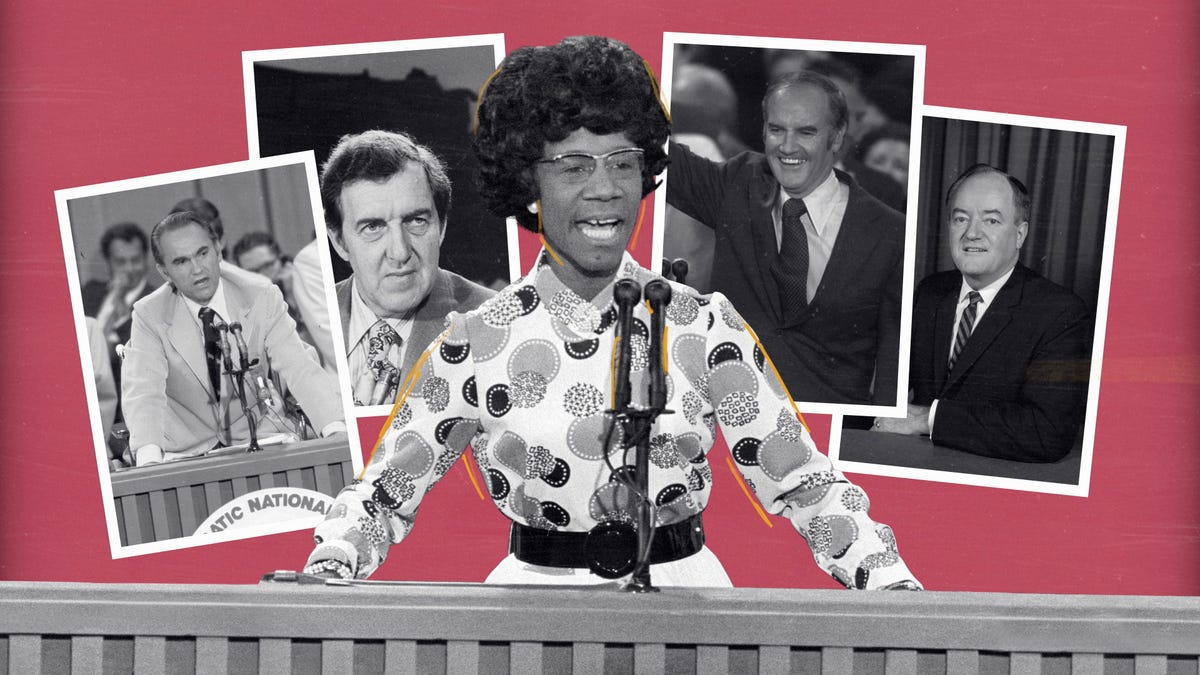
Assassinations

A History of Presidential Assassination Attempts

Julius Caesar

The Manhunt for John Wilkes Booth

Indira Gandhi
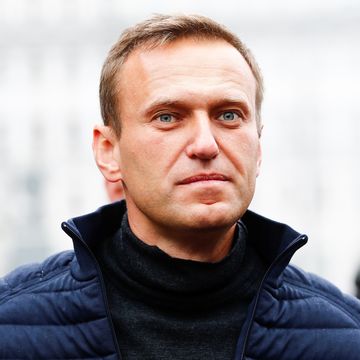
Alexei Navalny
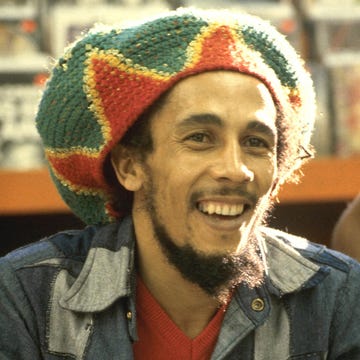
Martin Luther King Jr.
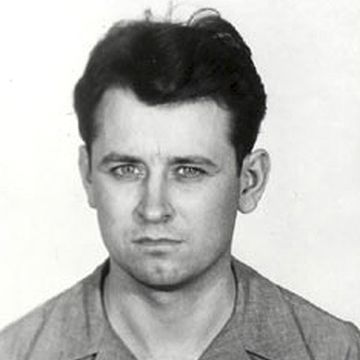
James Earl Ray

Malala Yousafzai

Who Killed JFK? You Won’t Believe Us Anyway

Lee Harvey Oswald
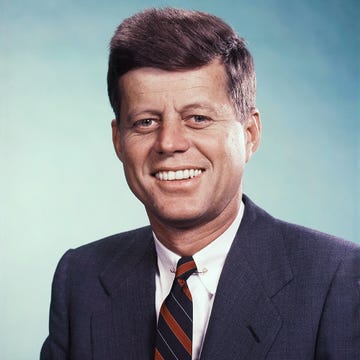
John F. Kennedy
- History Classics
- Your Profile
- Find History on Facebook (Opens in a new window)
- Find History on Twitter (Opens in a new window)
- Find History on YouTube (Opens in a new window)
- Find History on Instagram (Opens in a new window)
- Find History on TikTok (Opens in a new window)
- This Day In History
- History Podcasts
- History Vault
Mahatma Gandhi
By: History.com Editors
Updated: June 6, 2019 | Original: July 30, 2010

Revered the world over for his nonviolent philosophy of passive resistance, Mohandas Karamchand Gandhi was known to his many followers as Mahatma, or “the great-souled one.” He began his activism as an Indian immigrant in South Africa in the early 1900s, and in the years following World War I became the leading figure in India’s struggle to gain independence from Great Britain. Known for his ascetic lifestyle–he often dressed only in a loincloth and shawl–and devout Hindu faith, Gandhi was imprisoned several times during his pursuit of non-cooperation, and undertook a number of hunger strikes to protest the oppression of India’s poorest classes, among other injustices. After Partition in 1947, he continued to work toward peace between Hindus and Muslims. Gandhi was shot to death in Delhi in January 1948 by a Hindu fundamentalist.
Mohandas Karamchand Gandhi was born on October 2, 1869, at Porbandar, in the present-day Indian state of Gujarat. His father was the dewan (chief minister) of Porbandar; his deeply religious mother was a devoted practitioner of Vaishnavism (worship of the Hindu god Vishnu), influenced by Jainism, an ascetic religion governed by tenets of self-discipline and nonviolence. At the age of 19, Mohandas left home to study law in London at the Inner Temple, one of the city’s four law colleges. Upon returning to India in mid-1891, he set up a law practice in Bombay, but met with little success. He soon accepted a position with an Indian firm that sent him to its office in South Africa. Along with his wife, Kasturbai, and their children, Gandhi remained in South Africa for nearly 20 years.
Did you know? In the famous Salt March of April-May 1930, thousands of Indians followed Gandhi from Ahmadabad to the Arabian Sea. The march resulted in the arrest of nearly 60,000 people, including Gandhi himself.
Gandhi was appalled by the discrimination he experienced as an Indian immigrant in South Africa. When a European magistrate in Durban asked him to take off his turban, he refused and left the courtroom. On a train voyage to Pretoria, he was thrown out of a first-class railway compartment and beaten up by a white stagecoach driver after refusing to give up his seat for a European passenger. That train journey served as a turning point for Gandhi, and he soon began developing and teaching the concept of satyagraha (“truth and firmness”), or passive resistance, as a way of non-cooperation with authorities.
The Birth of Passive Resistance
In 1906, after the Transvaal government passed an ordinance regarding the registration of its Indian population, Gandhi led a campaign of civil disobedience that would last for the next eight years. During its final phase in 1913, hundreds of Indians living in South Africa, including women, went to jail, and thousands of striking Indian miners were imprisoned, flogged and even shot. Finally, under pressure from the British and Indian governments, the government of South Africa accepted a compromise negotiated by Gandhi and General Jan Christian Smuts, which included important concessions such as the recognition of Indian marriages and the abolition of the existing poll tax for Indians.
In July 1914, Gandhi left South Africa to return to India. He supported the British war effort in World War I but remained critical of colonial authorities for measures he felt were unjust. In 1919, Gandhi launched an organized campaign of passive resistance in response to Parliament’s passage of the Rowlatt Acts, which gave colonial authorities emergency powers to suppress subversive activities. He backed off after violence broke out–including the massacre by British-led soldiers of some 400 Indians attending a meeting at Amritsar–but only temporarily, and by 1920 he was the most visible figure in the movement for Indian independence.

6 Things You Might Not Know About Gandhi
The iconic Indian activist, known for his principle of nonviolent resistance, had humble beginnings and left an outsized legacy.

When Gandhi’s Salt March Rattled British Colonial Rule
In March 1930, Mahatma Gandhi and his followers set off on a brisk 241‑mile march to the Arabian Sea town of Dandi to lay Indian claim to the nation's own salt.
Assassination of Gandhi
Passive Resistance For some 50 years, Gandhi, born on October 2, 1869, and called “Mahatma” (“great‑souled” in Sanskrit), fought for India’s independence from Britain, practicing civil disobedience and peaceful protests that included fasting, boycotts and marches. He was an adherent of satyagraha (“truth‑force”), a passive political resistance he defined as “a weapon of the strongest […]
Leader of a Movement
As part of his nonviolent non-cooperation campaign for home rule, Gandhi stressed the importance of economic independence for India. He particularly advocated the manufacture of khaddar, or homespun cloth, in order to replace imported textiles from Britain. Gandhi’s eloquence and embrace of an ascetic lifestyle based on prayer, fasting and meditation earned him the reverence of his followers, who called him Mahatma (Sanskrit for “the great-souled one”). Invested with all the authority of the Indian National Congress (INC or Congress Party), Gandhi turned the independence movement into a massive organization, leading boycotts of British manufacturers and institutions representing British influence in India, including legislatures and schools.
After sporadic violence broke out, Gandhi announced the end of the resistance movement, to the dismay of his followers. British authorities arrested Gandhi in March 1922 and tried him for sedition; he was sentenced to six years in prison but was released in 1924 after undergoing an operation for appendicitis. He refrained from active participation in politics for the next several years, but in 1930 launched a new civil disobedience campaign against the colonial government’s tax on salt, which greatly affected Indian’s poorest citizens.
A Divided Movement
In 1931, after British authorities made some concessions, Gandhi again called off the resistance movement and agreed to represent the Congress Party at the Round Table Conference in London. Meanwhile, some of his party colleagues–particularly Mohammed Ali Jinnah, a leading voice for India’s Muslim minority–grew frustrated with Gandhi’s methods, and what they saw as a lack of concrete gains. Arrested upon his return by a newly aggressive colonial government, Gandhi began a series of hunger strikes in protest of the treatment of India’s so-called “untouchables” (the poorer classes), whom he renamed Harijans, or “children of God.” The fasting caused an uproar among his followers and resulted in swift reforms by the Hindu community and the government.
In 1934, Gandhi announced his retirement from politics in, as well as his resignation from the Congress Party, in order to concentrate his efforts on working within rural communities. Drawn back into the political fray by the outbreak of World War II , Gandhi again took control of the INC, demanding a British withdrawal from India in return for Indian cooperation with the war effort. Instead, British forces imprisoned the entire Congress leadership, bringing Anglo-Indian relations to a new low point.
Partition and Death of Gandhi
After the Labor Party took power in Britain in 1947, negotiations over Indian home rule began between the British, the Congress Party and the Muslim League (now led by Jinnah). Later that year, Britain granted India its independence but split the country into two dominions: India and Pakistan. Gandhi strongly opposed Partition, but he agreed to it in hopes that after independence Hindus and Muslims could achieve peace internally. Amid the massive riots that followed Partition, Gandhi urged Hindus and Muslims to live peacefully together, and undertook a hunger strike until riots in Calcutta ceased.
In January 1948, Gandhi carried out yet another fast, this time to bring about peace in the city of Delhi. On January 30, 12 days after that fast ended, Gandhi was on his way to an evening prayer meeting in Delhi when he was shot to death by Nathuram Godse, a Hindu fanatic enraged by Mahatma’s efforts to negotiate with Jinnah and other Muslims. The next day, roughly 1 million people followed the procession as Gandhi’s body was carried in state through the streets of the city and cremated on the banks of the holy Jumna River.

Sign up for Inside History
Get HISTORY’s most fascinating stories delivered to your inbox three times a week.
By submitting your information, you agree to receive emails from HISTORY and A+E Networks. You can opt out at any time. You must be 16 years or older and a resident of the United States.
More details : Privacy Notice | Terms of Use | Contact Us
Biography Online

Mahatma Gandhi Biography
Mahatma Gandhi was a prominent Indian political leader who was a leading figure in the campaign for Indian independence. He employed non-violent principles and peaceful disobedience as a means to achieve his goal. He was assassinated in 1948, shortly after achieving his life goal of Indian independence. In India, he is known as ‘Father of the Nation’.
“When I despair, I remember that all through history the ways of truth and love have always won. There have been tyrants, and murderers, and for a time they can seem invincible, but in the end they always fall. Think of it–always.”
Short Biography of Mahatma Gandhi
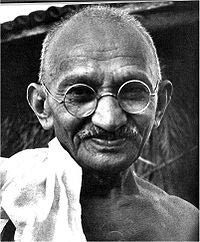
Around this time, he also studied the Bible and was struck by the teachings of Jesus Christ – especially the emphasis on humility and forgiveness. He remained committed to the Bible and Bhagavad Gita throughout his life, though he was critical of aspects of both religions.
Gandhi in South Africa
On completing his degree in Law, Gandhi returned to India, where he was soon sent to South Africa to practise law. In South Africa, Gandhi was struck by the level of racial discrimination and injustice often experienced by Indians. In 1893, he was thrown off a train at the railway station in Pietermaritzburg after a white man complained about Gandhi travelling in first class. This experience was a pivotal moment for Gandhi and he began to represent other Indias who experienced discrimination. As a lawyer he was in high demand and soon he became the unofficial leader for Indians in South Africa. It was in South Africa that Gandhi first experimented with campaigns of civil disobedience and protest; he called his non-violent protests satyagraha . Despite being imprisoned for short periods of time, he also supported the British under certain conditions. During the Boer war, he served as a medic and stretcher-bearer. He felt that by doing his patriotic duty it would make the government more amenable to demands for fair treatment. Gandhi was at the Battle of Spion serving as a medic. An interesting historical anecdote, is that at this battle was also Winston Churchill and Louis Botha (future head of South Africa) He was decorated by the British for his efforts during the Boer War and Zulu rebellion.
Gandhi and Indian Independence
After 21 years in South Africa, Gandhi returned to India in 1915. He became the leader of the Indian nationalist movement campaigning for home rule or Swaraj .
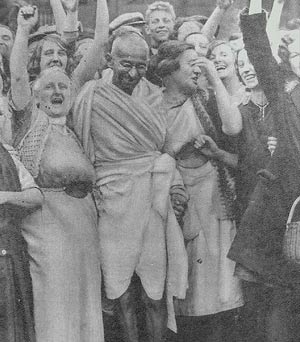
Gandhi also encouraged his followers to practise inner discipline to get ready for independence. Gandhi said the Indians had to prove they were deserving of independence. This is in contrast to independence leaders such as Aurobindo Ghose , who argued that Indian independence was not about whether India would offer better or worse government, but that it was the right for India to have self-government.
Gandhi also clashed with others in the Indian independence movement such as Subhas Chandra Bose who advocated direct action to overthrow the British.
Gandhi frequently called off strikes and non-violent protest if he heard people were rioting or violence was involved.
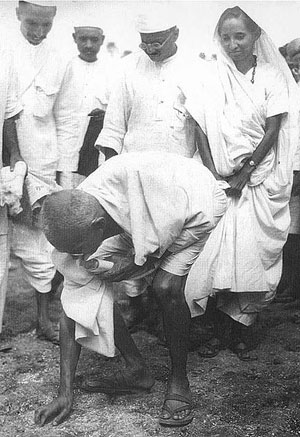
In 1930, Gandhi led a famous march to the sea in protest at the new Salt Acts. In the sea, they made their own salt, in violation of British regulations. Many hundreds were arrested and Indian jails were full of Indian independence followers.
“With this I’m shaking the foundations of the British Empire.”
– Gandhi – after holding up a cup of salt at the end of the salt march.
However, whilst the campaign was at its peak some Indian protesters killed some British civilians, and as a result, Gandhi called off the independence movement saying that India was not ready. This broke the heart of many Indians committed to independence. It led to radicals like Bhagat Singh carrying on the campaign for independence, which was particularly strong in Bengal.
In 1931, Gandhi was invited to London to begin talks with the British government on greater self-government for India, but remaining a British colony. During his three month stay, he declined the government’s offer of a free hotel room, preferring to stay with the poor in the East End of London. During the talks, Gandhi opposed the British suggestions of dividing India along communal lines as he felt this would divide a nation which was ethnically mixed. However, at the summit, the British also invited other leaders of India, such as BR Ambedkar and representatives of the Sikhs and Muslims. Although the dominant personality of Indian independence, he could not always speak for the entire nation.
Gandhi’s humour and wit
During this trip, he visited King George in Buckingham Palace, one apocryphal story which illustrates Gandhi’s wit was the question by the king – what do you think of Western civilisation? To which Gandhi replied
“It would be a good idea.”
Gandhi wore a traditional Indian dress, even whilst visiting the king. It led Winston Churchill to make the disparaging remark about the half naked fakir. When Gandhi was asked if was sufficiently dressed to meet the king, Gandhi replied
“The king was wearing clothes enough for both of us.”
Gandhi once said he if did not have a sense of humour he would have committed suicide along time ago.
Gandhi and the Partition of India
After the war, Britain indicated that they would give India independence. However, with the support of the Muslims led by Jinnah, the British planned to partition India into two: India and Pakistan. Ideologically Gandhi was opposed to partition. He worked vigorously to show that Muslims and Hindus could live together peacefully. At his prayer meetings, Muslim prayers were read out alongside Hindu and Christian prayers. However, Gandhi agreed to the partition and spent the day of Independence in prayer mourning the partition. Even Gandhi’s fasts and appeals were insufficient to prevent the wave of sectarian violence and killing that followed the partition.
Away from the politics of Indian independence, Gandhi was harshly critical of the Hindu Caste system. In particular, he inveighed against the ‘untouchable’ caste, who were treated abysmally by society. He launched many campaigns to change the status of untouchables. Although his campaigns were met with much resistance, they did go a long way to changing century-old prejudices.
At the age of 78, Gandhi undertook another fast to try and prevent the sectarian killing. After 5 days, the leaders agreed to stop killing. But ten days later Gandhi was shot dead by a Hindu Brahmin opposed to Gandhi’s support for Muslims and the untouchables.
Gandhi and Religion
Gandhi was a seeker of the truth.
“In the attitude of silence the soul finds the path in a clearer light, and what is elusive and deceptive resolves itself into crystal clearness. Our life is a long and arduous quest after Truth.”
Gandhi said his great aim in life was to have a vision of God. He sought to worship God and promote religious understanding. He sought inspiration from many different religions: Jainism, Islam, Christianity, Hinduism, Buddhism and incorporated them into his own philosophy.
On several occasions, he used religious practices and fasting as part of his political approach. Gandhi felt that personal example could influence public opinion.
“When every hope is gone, ‘when helpers fail and comforts flee,’ I find that help arrives somehow, from I know not where. Supplication, worship, prayer are no superstition; they are acts more real than the acts of eating, drinking, sitting or walking. It is no exaggeration to say that they alone are real, all else is unreal.”
– Gandhi Autobiography – The Story of My Experiments with Truth
Citation: Pettinger, Tejvan . “ Biography of Mahatma Gandhi” , Oxford, UK. www.biographyonline.net 12th Jan 2011. Last updated 1 Feb 2020.
The Essential Gandhi

The Essential Gandhi: An Anthology of His Writings on His Life, Work, and Ideas at Amazon

Gandhi: An Autobiography – The Story of My Experiments With Truth at Amazon
Related pages
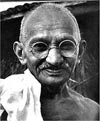
Indian men and women involved in the Independence Movement.
- Nehru Biography
He stood out in his time in history. Non violence as he practised it was part of his spiritual learning usedvas a political tool. How can one say he wasn’t a good lawyer or he wasn’t a good leader when he had such a following and he was part of the negotiations thar brought about Indian Independance? I just dipped into this ti find out about the salt march.:)
- February 09, 2019 9:31 AM
- By Lakmali Gunawardena
mahatma gandhi was a good person but he wasn’t all good because when he freed the indian empire the partition grew between the muslims and they fought .this didn’t happen much when the british empire was in control because muslims and hindus had a common enemy to unite against.
I am not saying the british empire was a good thing.
- January 01, 2019 3:24 PM
- By marcus carpenter
Dear very nice information Gandhi ji always inspired us thanks a lot.
- October 01, 2018 1:40 PM
FATHER OF NATION
- June 03, 2018 8:34 AM
Gandhi was a lawyer who did not make a good impression as a lawyer. His success and influence was mediocre in law religion and politics. He rose to prominence by chance. He was neither a good lawyer or a leader circumstances conspired at a time in history for him to stand out as an astute leader both in South Africa and in India. The British were unable to control the tidal wave of independence in all the countries they ruled at that time. Gandhi was astute enough to seize the opportunity and used non violence as a tool which had no teeth but caused sufficient concern for the British to negotiate and hand over territories which they had milked dry.
- February 09, 2018 2:30 PM
- By A S Cassim
By being “astute enough to seize the opportunity” and not being pushed down/ defeated by an Empire, would you agree this is actually the reason why Gandhi made a good impression as a leader? Also, despite his mediocre success and influence as you mentioned, would you agree the outcome of his accomplishments are clearly a demonstration he actually was relevant to law, religion and politics?
- November 23, 2018 12:45 AM
Who was Mahatma Gandhi? (Short biography)
1. biography.
Mahatma Gandhi was an Indian lawyer, politician, and thinker of the nineteenth and twentieth century. He was known mainly for claiming sovereignty and leading the independence of India through nonviolent methods . He was born on October 2, 1869 and died on January 30, 1948.
1.1. Childhood
Gandhi was born in Porbandar, a small coastal city in western India, son of Karamchand Gandhi (the city’s prime minister) and Putlibai Gandhi. His mother was one of his most important influences in his life. From her, Gandhi learned respect for living beings, the virtues of vegetarianism, and tolerance towards different ways of thinking, even towards other creeds and religions.
At eighteen Gandhi moved to London to study law at University College London. When he finished his studies he returned to Bombay to try to practice as a lawyer, but the over-saturation of the profession at that time coupled with the lack of real experience in the courts made it impossible for him to succeed. Luckily, during that same year (1893) he was presented with the opportunity to work in South Africa which he accepted the job on the spot. He was motivated by the resistance struggle and non-violent civil disobedience that his compatriots were carrying out in the face of pressure and discrimination from the country towards the Hindu people.
1.3. Years in South Africa
In South Africa, Gandhi saw first hand the strong rejection and hatred towards the Hindus, which motivated him to create an Indian political party to defend their rights in 1894. After 22 years of nonviolent protests in South Africa, Gandhi gained enough power and respect to negotiate with South African General Jan Christian Smuts in order to find a solution to the Indian conflict.
1.4. Return to India
In 1915 Gandhi returned to India, where he continued to promulgate his religious, philosophical and political values. During these years in India, two great social protests stood out: The March of the Salt (1930) and The Vindication of the Independence of the India of the British empire in the time frame of the Second World War (1939-1945). The latter, involuntarily involving India in the war as a British dependency, together with all the years of nonviolent struggle, finally led to the official independence of India on August 15, 1947.
A few months later, on January 30, 1948, Gandhi was assassinated by Nathuram Godse, an ultra-right Hindu fanatic. Godse was an extremist who wanted to establish Hinduism as the one and only acceptable religion. On the other hand, Gandhi, although a supporter of Hinduism, was accepting of other religions and beliefs. Godse saw Gandhi as an obstacle to his own political agenda and thus to defend this ideology of an egalitarian society, Gandhi was murdered at the age of 78.
2. GANDHI DOCUMENTARY
3. REFERENCES
- Saberespractico.com (2018). ¿Quién fue Gandhi? ¿Qué hizo? (Resumen) . Text in Spanish. Avaliable [ HERE ].
- Krishna – Youtube.com (2014). Mahatma Gandhi Documentary. Avaliable [ HERE ].
- Unknown – Wikimedia Commons (1930). Gandhi portrait . Original image avaliable [ HERE ].
Learner Trip
PhD in Education. I've been sharing all kind of content/information on the Internet for 14+ years now. I try to do it in the most straightforward and reliable way possible, cross-referencing information with the primary sources of authority in each field (unless unnecessary). You can reach out to me in the comments. I read all your inquiries and typically respond to most of them daily. If you find what I do helpful, you can support me here . 🙂

Leave a Reply Cancel reply
Your email address will not be published. Required fields are marked *
Don't subscribe All new comments Replies to my comments Notify me of followup comments via e-mail. You can also subscribe without commenting.

IMAGES
VIDEO
COMMENTS
Mohandas Karamchand Gandhi was the preeminent leader of the Indian independence movement in British-ruled India.
Mahatma Gandhi (born October 2, 1869, Porbandar, India—died January 30, 1948, Delhi) was an Indian lawyer, politician, social activist, and writer who became the leader of the Indian Independence Movement against British rule. As such, he came to be considered the father of his country.
Mahatma Gandhi was the primary leader of India’s independence movement and also the architect of a form of non-violent civil disobedience that would influence the world.
Mohandas Karamchand Gandhi was leader of India's nonviolent independence movement against British rule. He was revered the world over for his philosophy of passive resistance and was known to his...
Mahatma Gandhi was a prominent Indian political leader who was a leading figure in the campaign for Indian independence. He employed non-violent principles and peaceful disobedience as a means to achieve his goal. He was assassinated in 1948, shortly after achieving his life goal of Indian independence. In India, he is known as ‘Father of the ...
Mohandas Karamchand Gandhi (ISO: Mōhanadāsa Karamacaṁda Gāṁdhī; [c] 2 October 1869 – 30 January 1948) was an Indian lawyer, anti-colonial nationalist, and political ethicist who employed nonviolent resistance to lead the successful campaign for India's independence from British rule.
1. BIOGRAPHY. Mahatma Gandhi was an Indian lawyer, politician, and thinker of the nineteenth and twentieth century. He was known mainly for claiming sovereignty and leading the independence of India through nonviolent methods. He was born on October 2, 1869 and died on January 30, 1948.
Mahatma Gandhi, byname of Mohandas Karamchand Gandhi, (born Oct. 2, 1869, Porbandar, India—died Jan. 30, 1948, Delhi), Preeminent leader of Indian nationalism and prophet of nonviolence in the 20th century.
Mohandas Karamchand Gandhi was an eminent freedom activist and an influential political leader who played a dominant role in India's struggle for independence. Gandhi is known by different names, such as Mahatma (a great soul), Bapuji (endearment for father in Gujarati) and Father of the Nation.
Mohandas Gandhi was a leader of India ’s independence movement. When India was a colony of Great Britain, Gandhi used nonviolent methods to protest against British rule. His efforts earned him the title Mahatma. Mahatma means “great soul.”.